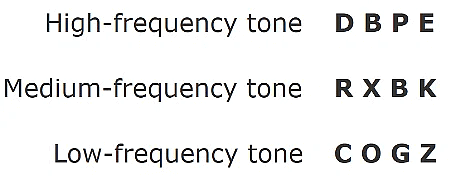Passage
Dr. George Sperling conducted an experiment in 1960 to study information processing and the phenomenon of iconic memory. In the experiment, participants were shown a brief display of letters arranged in a 4x3 grid on a screen for less than a second. When asked to recall the letters, most participants could only remember the first few letters.

To further investigate the limitations of memory, Dr. Sperling introduced a new condition where participants were instructed to recall only one row of letters based on a specific tone they heard after the image disappeared. Interestingly, when the tone was played immediately after the display, participants were able to recall all the letters in the indicated row. This discovery revealed the existence of iconic memory, a visual form of sensory memory that briefly holds visual information. In addition to iconic memory, there is also auditory sensory memory, known as echoic memory, which lasts for several seconds. The processing of information involves different stages, including sensory memory, working memory, and various components such as the visuospatial sketchpad, the phonological loop, and the central executive, which work together to handle visual and auditory information and coordinate cognitive tasks.
Question for Practice Passage Test - 14
Try yourself:What did Dr. George Sperling investigate in his experiment?
Explanation
Dr. George Sperling conducted the experiment to study iconic memory and understand its limitations, as well as its role in information processing.
Report a problem
Question for Practice Passage Test - 14
Try yourself:What happened when participants were asked to recall as many letters as possible from the displayed grid?
Explanation
When participants were asked to recall as many letters as possible from the displayed grid, they were able to remember only the first four or five letters, indicating a limitation in their memory capacity.
Report a problem
Question for Practice Passage Test - 14
Try yourself:What was the purpose of introducing tones in Dr. Sperling's experiment?
Explanation
The tones were used as cues to indicate which row of letters participants should recall, helping Dr. Sperling investigate memory recall based on specific instructions.
Report a problem
Question for Practice Passage Test - 14
Try yourself:What is iconic memory?
Explanation
Iconic memory refers to the visual form of sensory memory, which briefly holds visual information from the environment.
Report a problem
Question for Practice Passage Test - 14
Try yourself:Which component of information processing is responsible for coordinating visual and auditory information?
Explanation
The central executive is the component responsible for coordinating different types of information, such as connecting auditory input with visual information, enabling tasks like associating an address heard with a map seen.
Report a problem





















